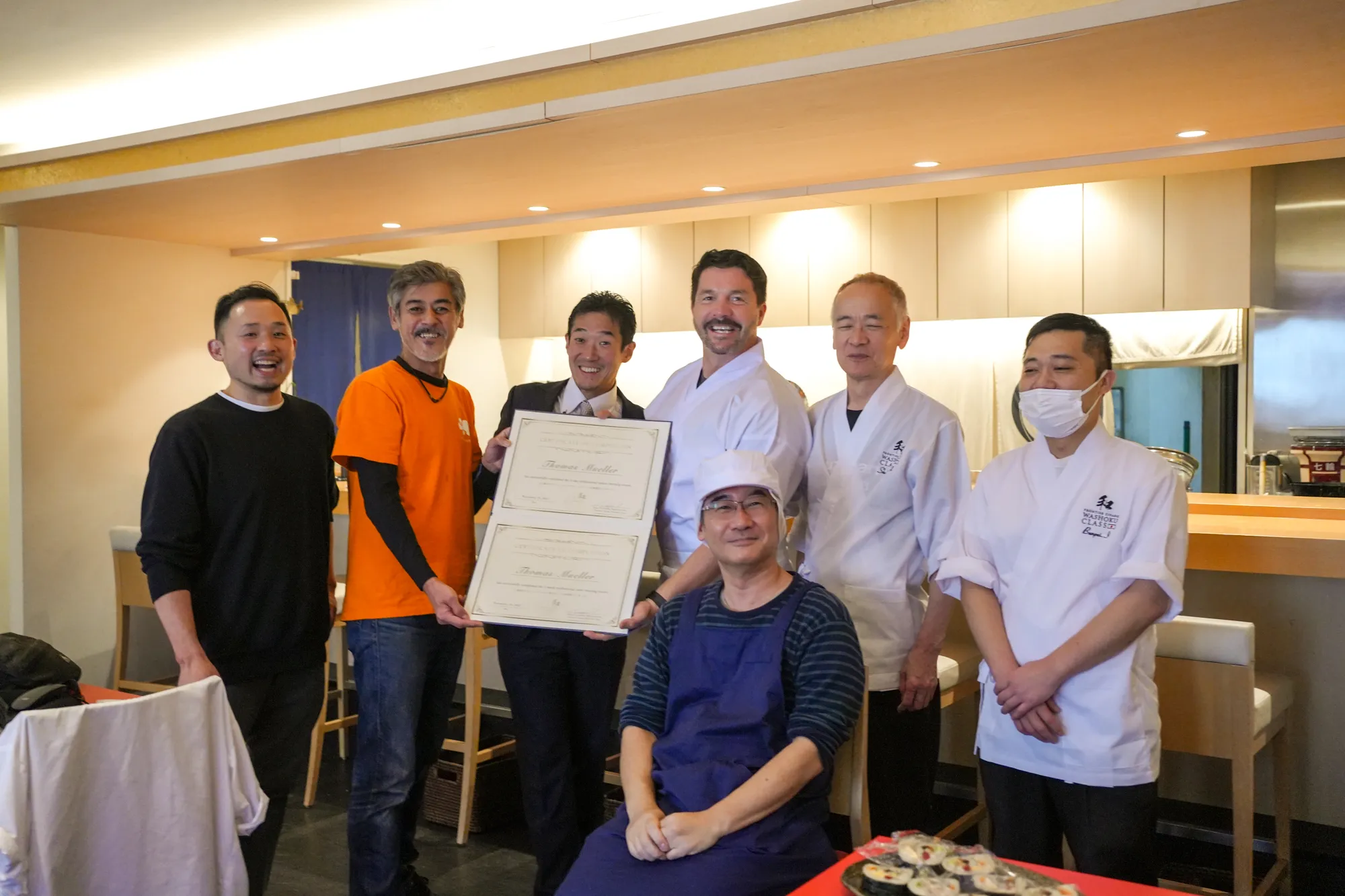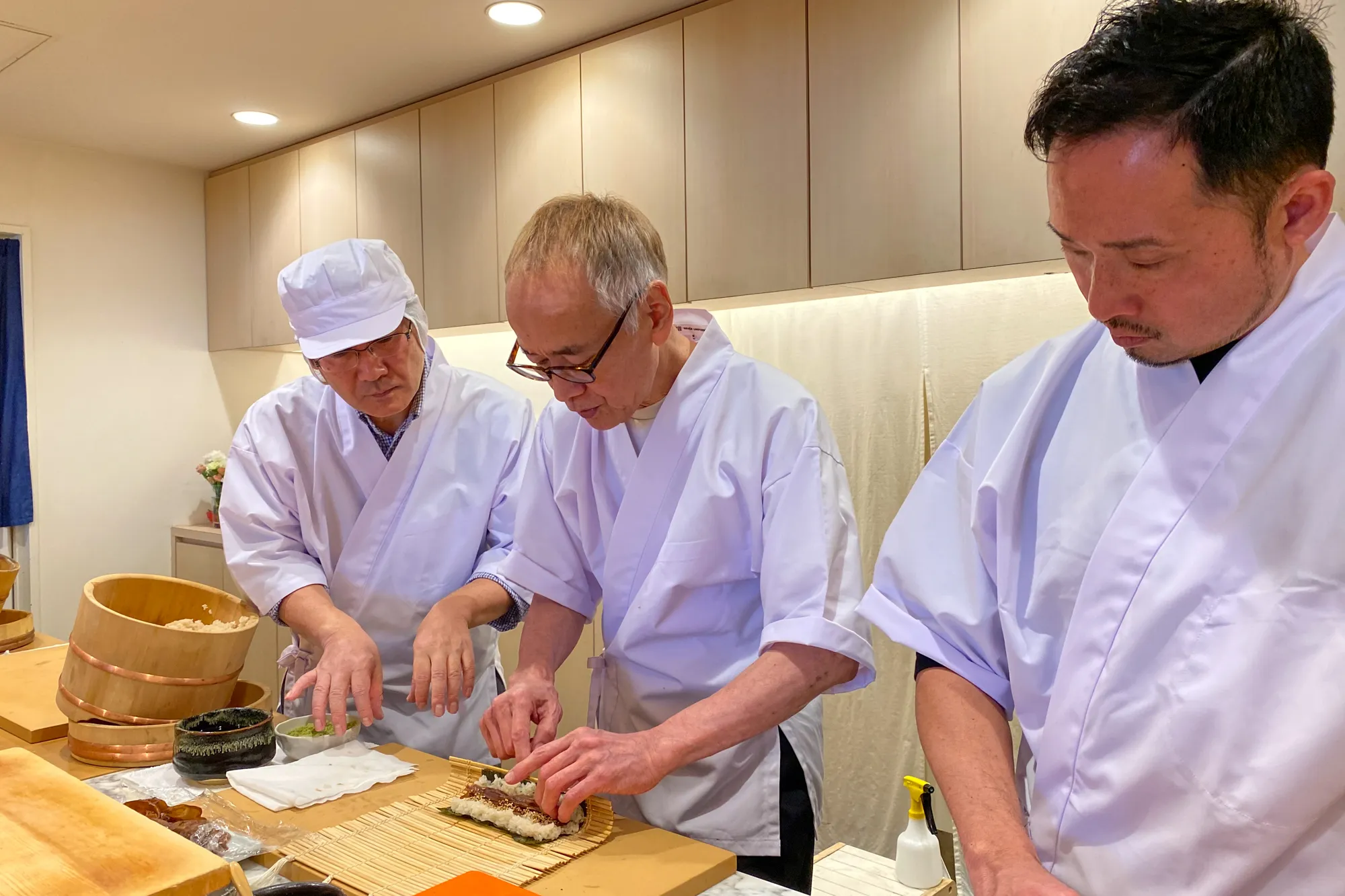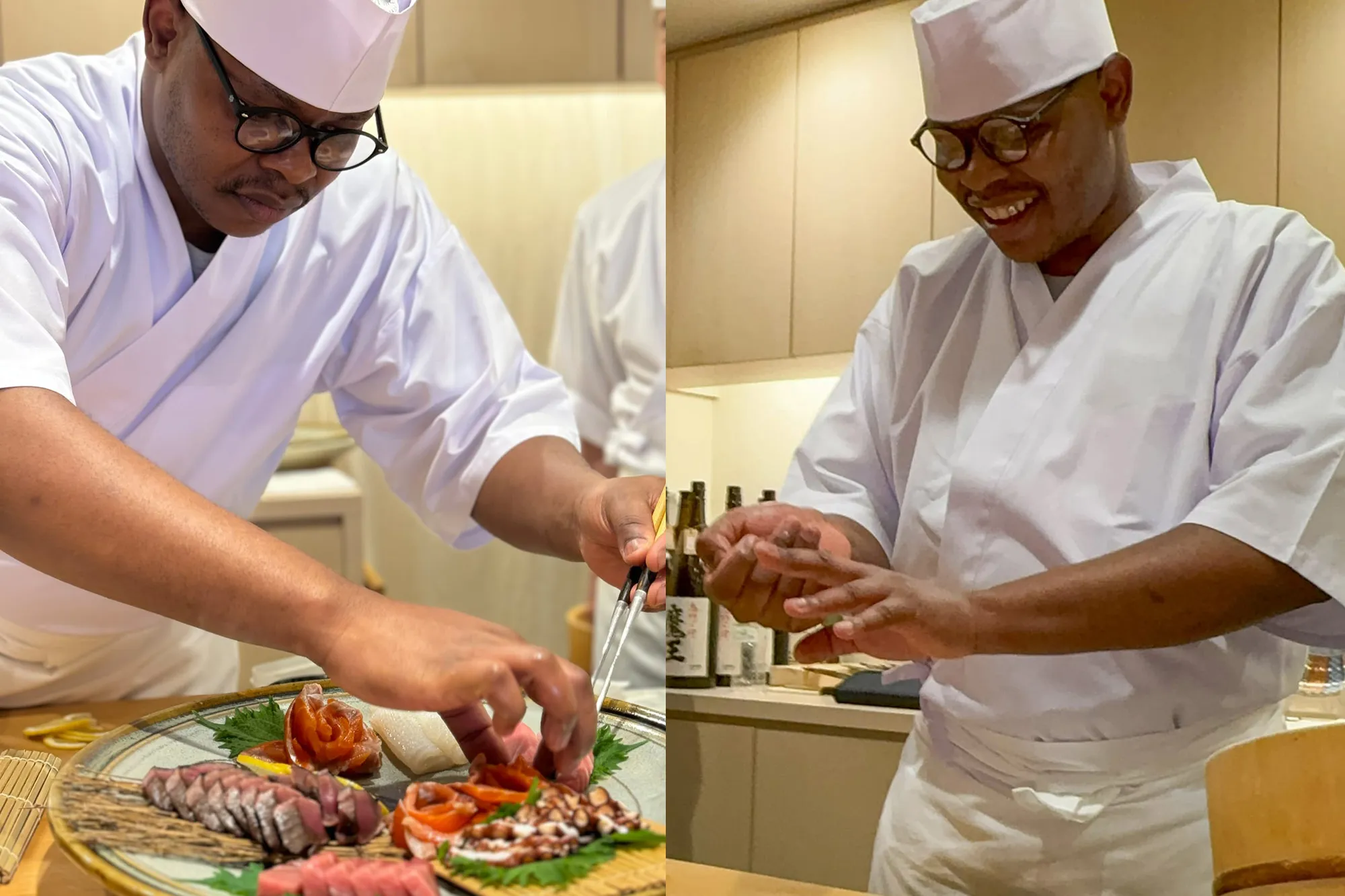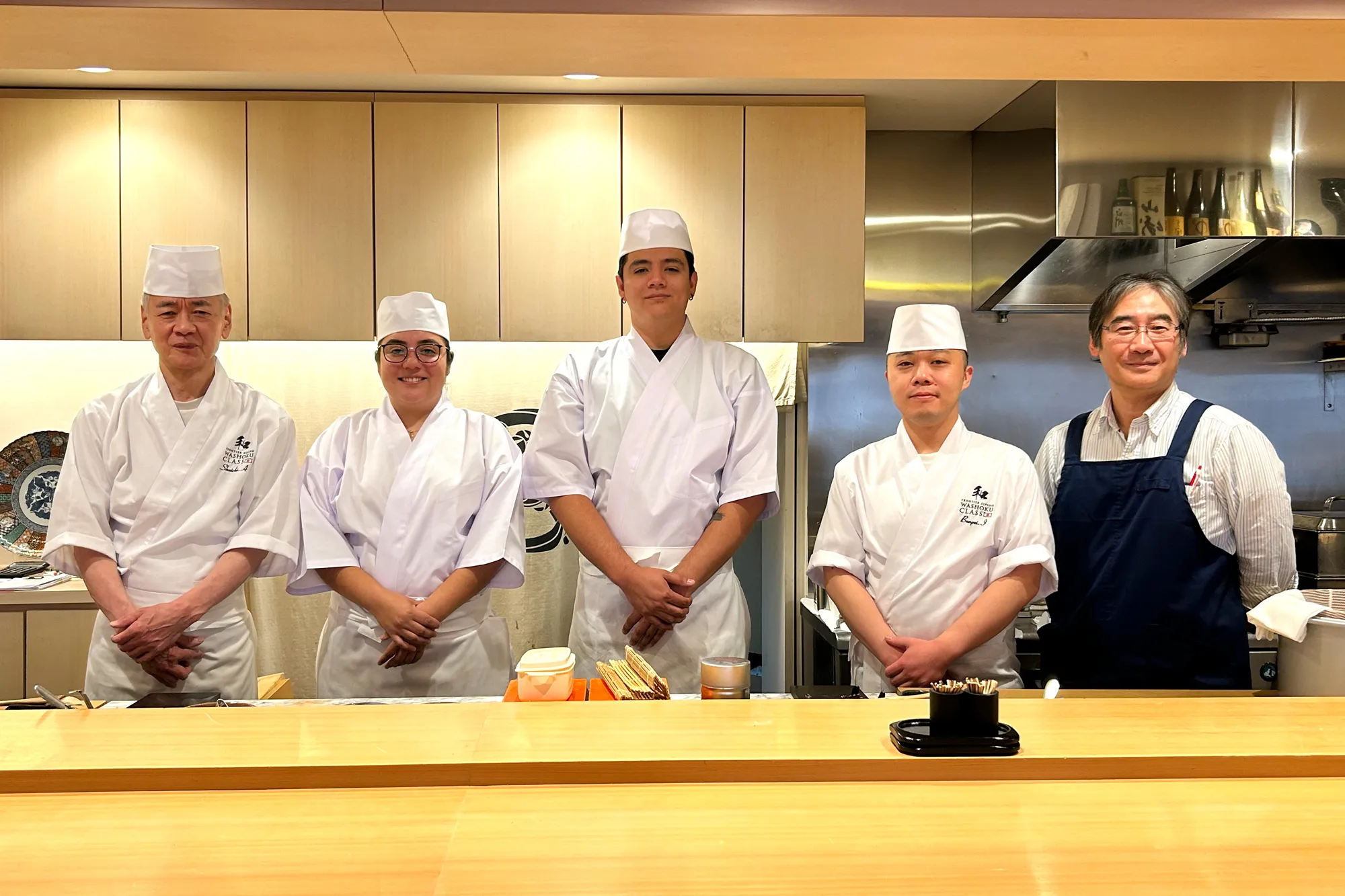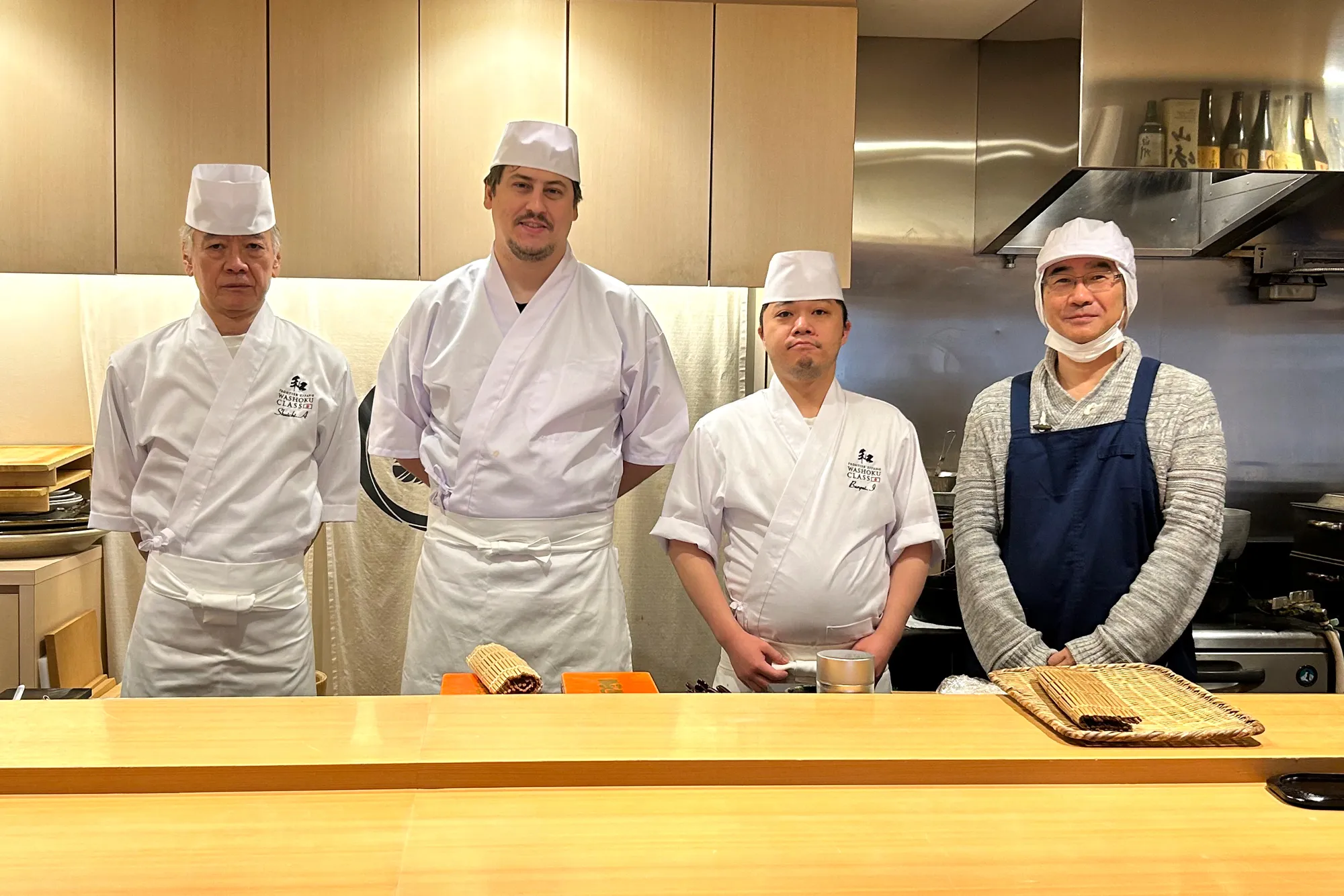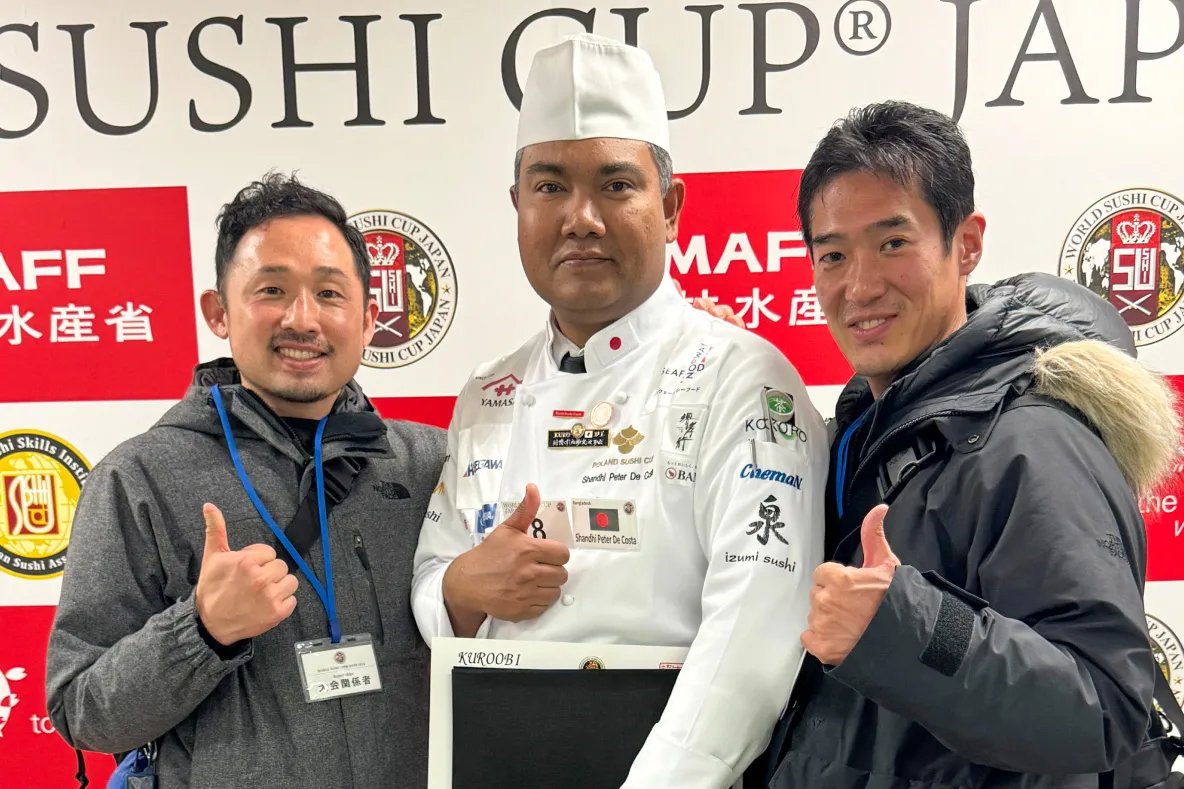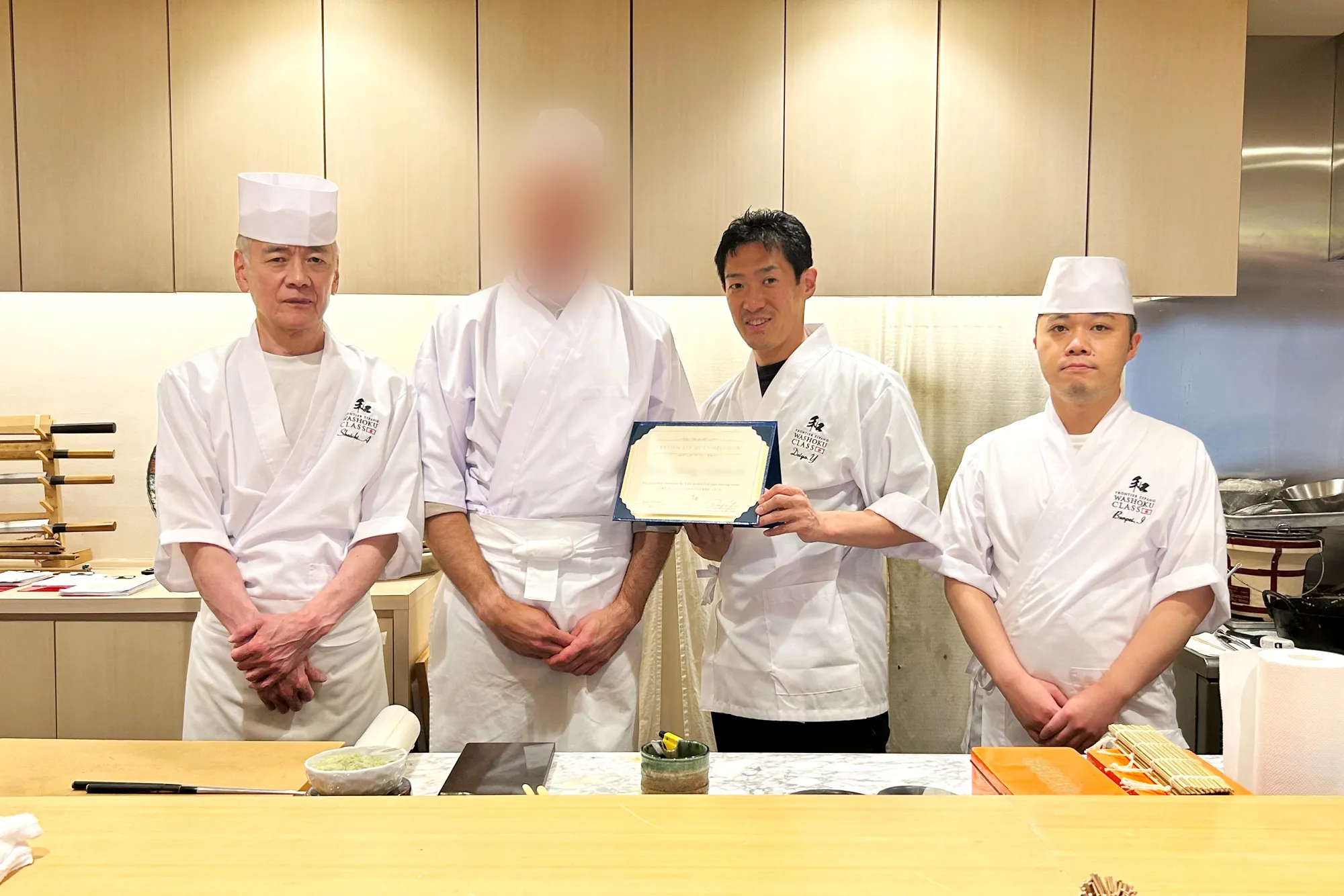Lesson Report: Four-Week Private Sushi Course (Week 1 to 2)
Apr 10, 2024
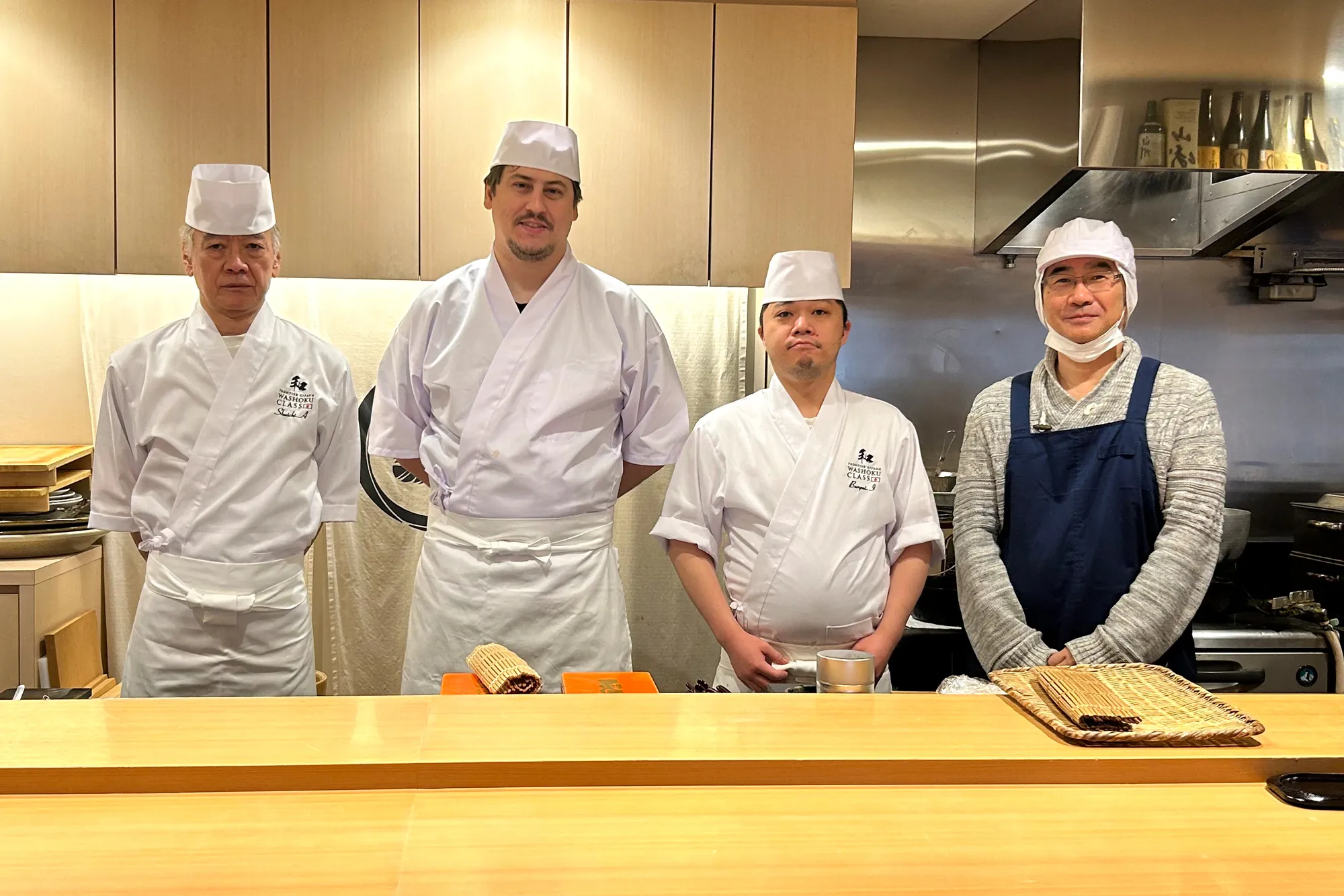
This article highlights an aspiring student originally from Sweden, now living in Portugal. Over the past few years, he has been honing his culinary skills with the goal of becoming a chef and opening his own restaurant. We are delighted that he chose FZWC for the 4-week Susushi Course. Before joining our school, he invested in Japanese kitchen knives and whetstones, showcasing his enthusiasm for learning traditional sushi techniques. Join us as we embark on a 4-Week Sushi Journey to help make his dream a reality!
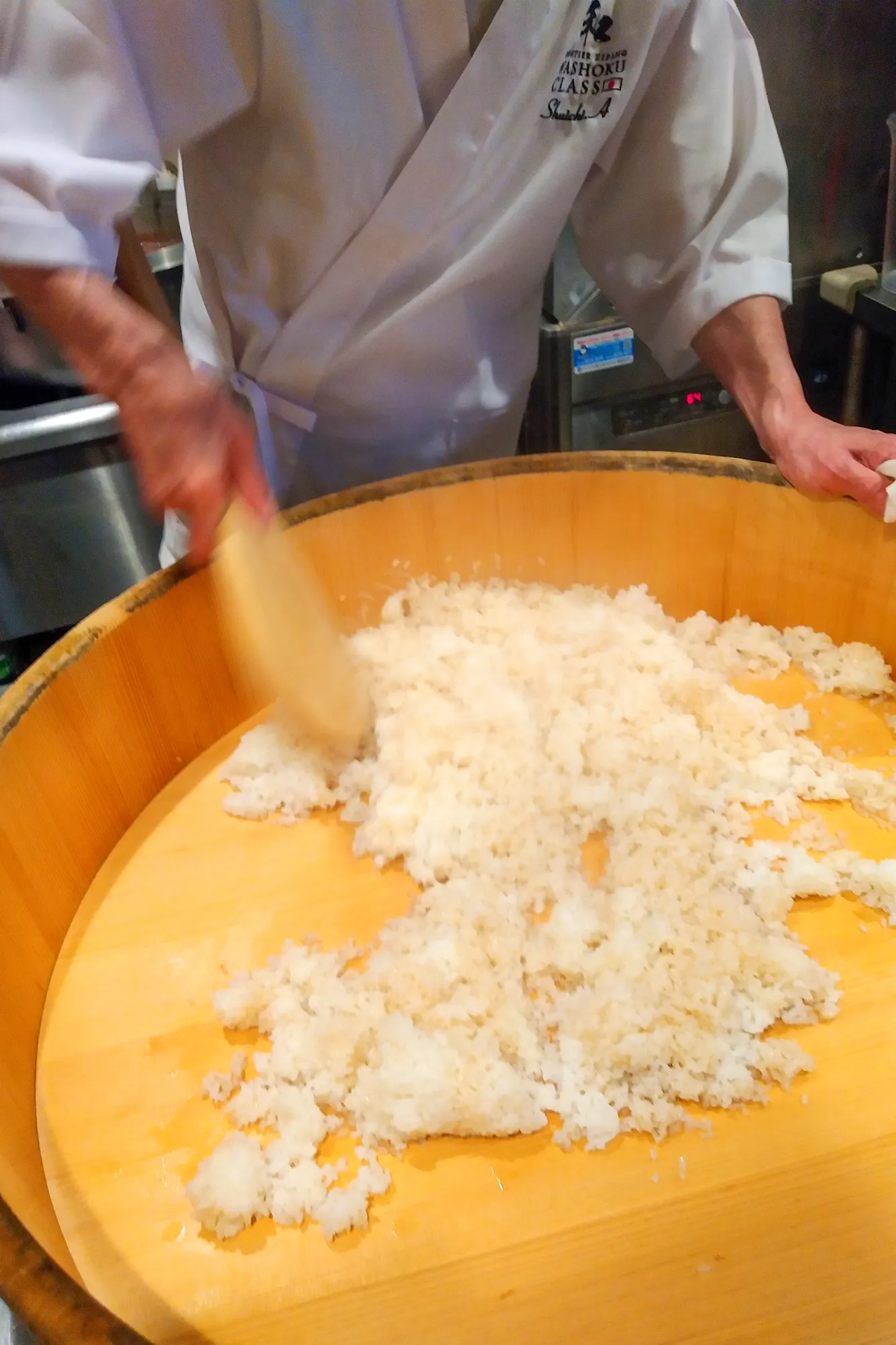
Our sushi lesson of the day typically commences with the cooking of rice and the preparation of vinegared rice for sushi. On the first day, our instructor demonstrated the entire process step by step to the students. On the subsequent days, the student cooked rice and prepared sushi rice under the instructor’s guidance. He approached the tasks with meticulous care, frequently seeking confirmation from the instructor to ensure accuracy. Initially, the student required detailed instructions and assistance from the instructor, but within two weeks, his proficiency noticeably improved. Despite this progress, he still relied on the instructor’s guidance to determine the correct timing for each step, such as when to cease rinsing the rice or stirring the vinegared rice with a spatula. The next milestone will involve refining his technique to streamline the process and develop a sense of timing for each stage.

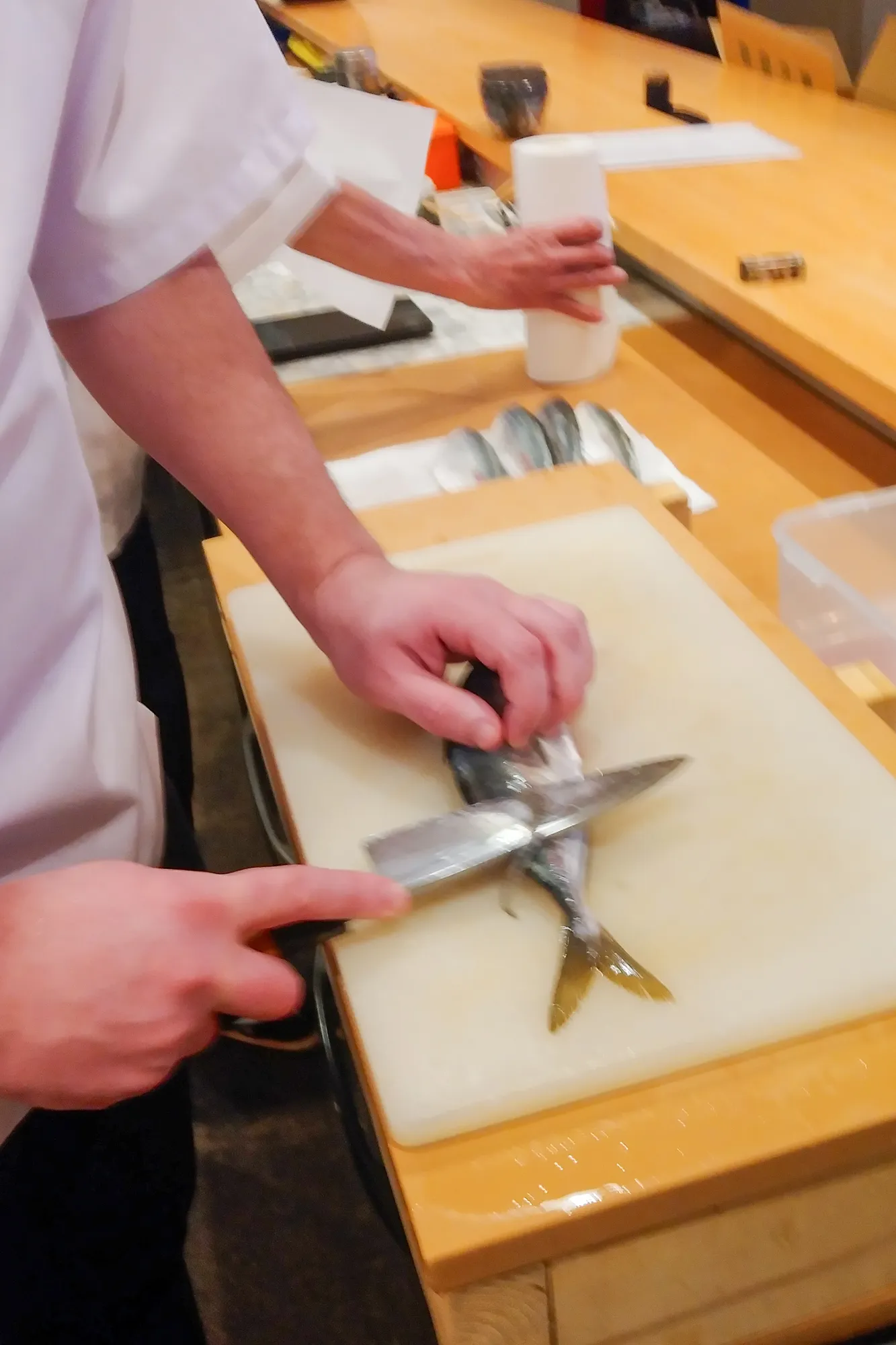
The next session focused on filleting and preparing fish. For beginners, ‘aji’ (horse mackerel) is one of the most suitable fish for practicing filleting. Initially, the student observed the instructor filleting ‘aji’ and then attempted to do so himself. He proceeded cautiously, keen to avoid wasting any flesh. Despite having found numerous instructions on fish filleting online before joining our course, he gained valuable insights into successful filleting through attentive guidance from the instructor. For instance, the instructor assisted the student in holding the Japanese kitchen knife and demonstrated the correct angle, position, and movement directly. This greatly aided the student in visualizing how to properly use the Japanese kitchen knife. While some attempts at filleting were successful and others were not, he anticipates further enhancing his filleting skills over the next two weeks.
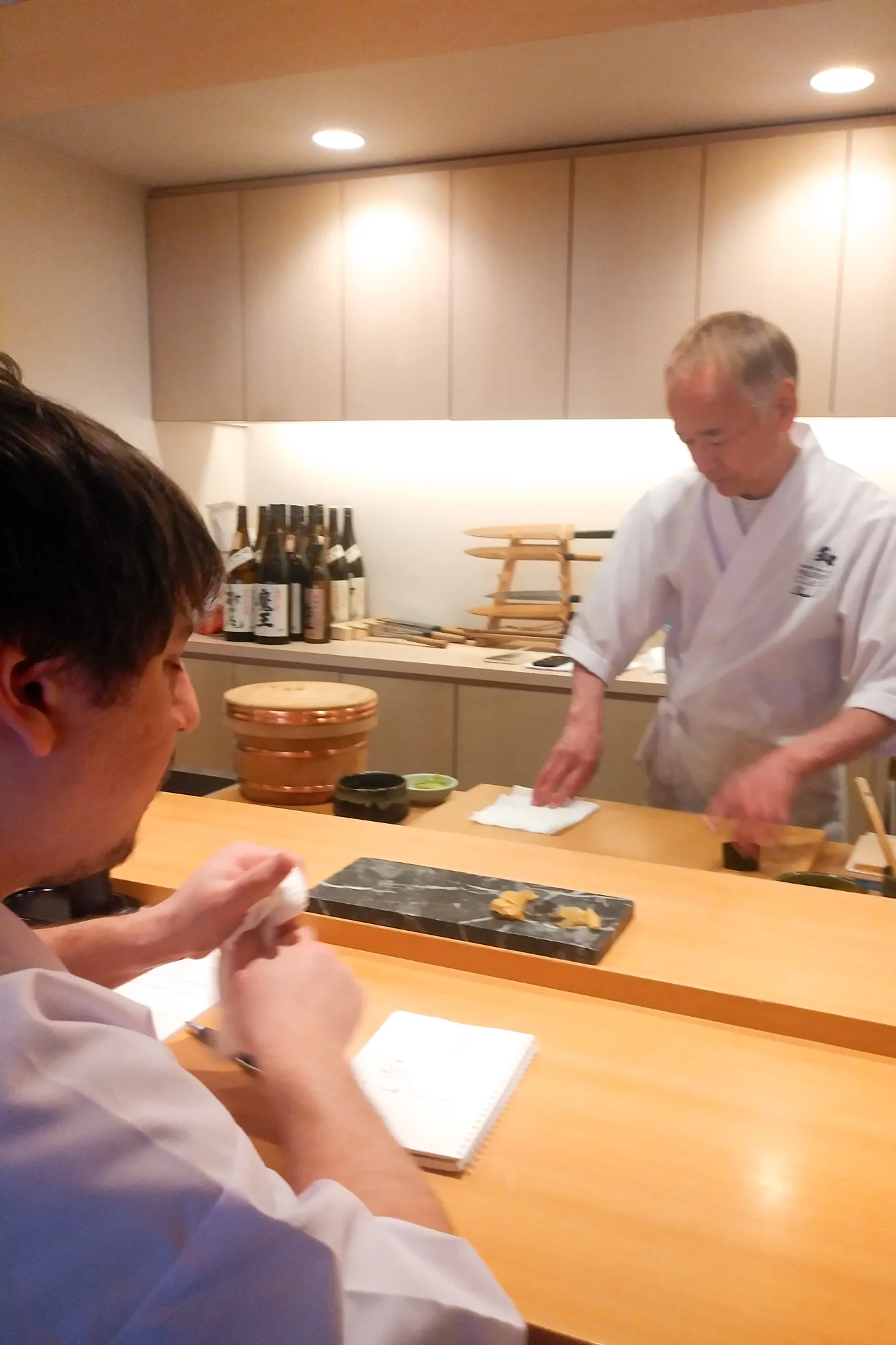
During a break on the first day, the instructor prepared several pieces of nigiri for the student to experience authentic, traditional sushi, which he aspires to master. He savored ‘ishidai’ (striped beakfish), ‘saba’ (mackerel), ‘aji’ (horse mackerel), ‘ika’ (squid), ‘maguro akami’ (red flesh of tuna), ‘toro’ (fatty flesh of tuna), ‘kohada’ (gizzard shad), ‘anago’ (conger eel), ‘uni’ (sea urchin), and ‘tamago’ (Japanese rolled omelet). The student found great satisfaction in the nigiri served by the instructor and took note of the Japanese names for each fish. Learning sushi in Japan, he eagerly seeks to master the names of fish in Japanese.

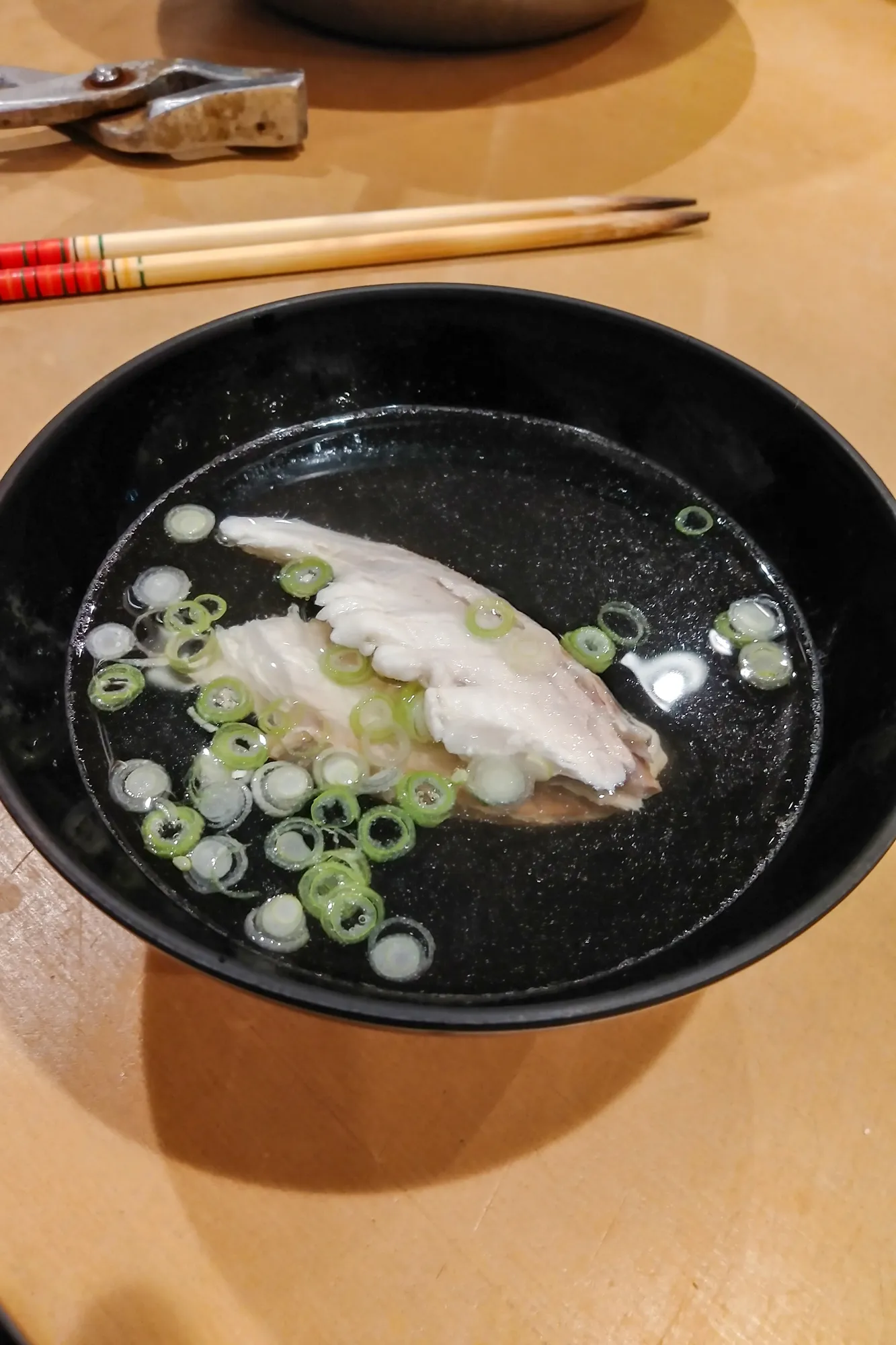
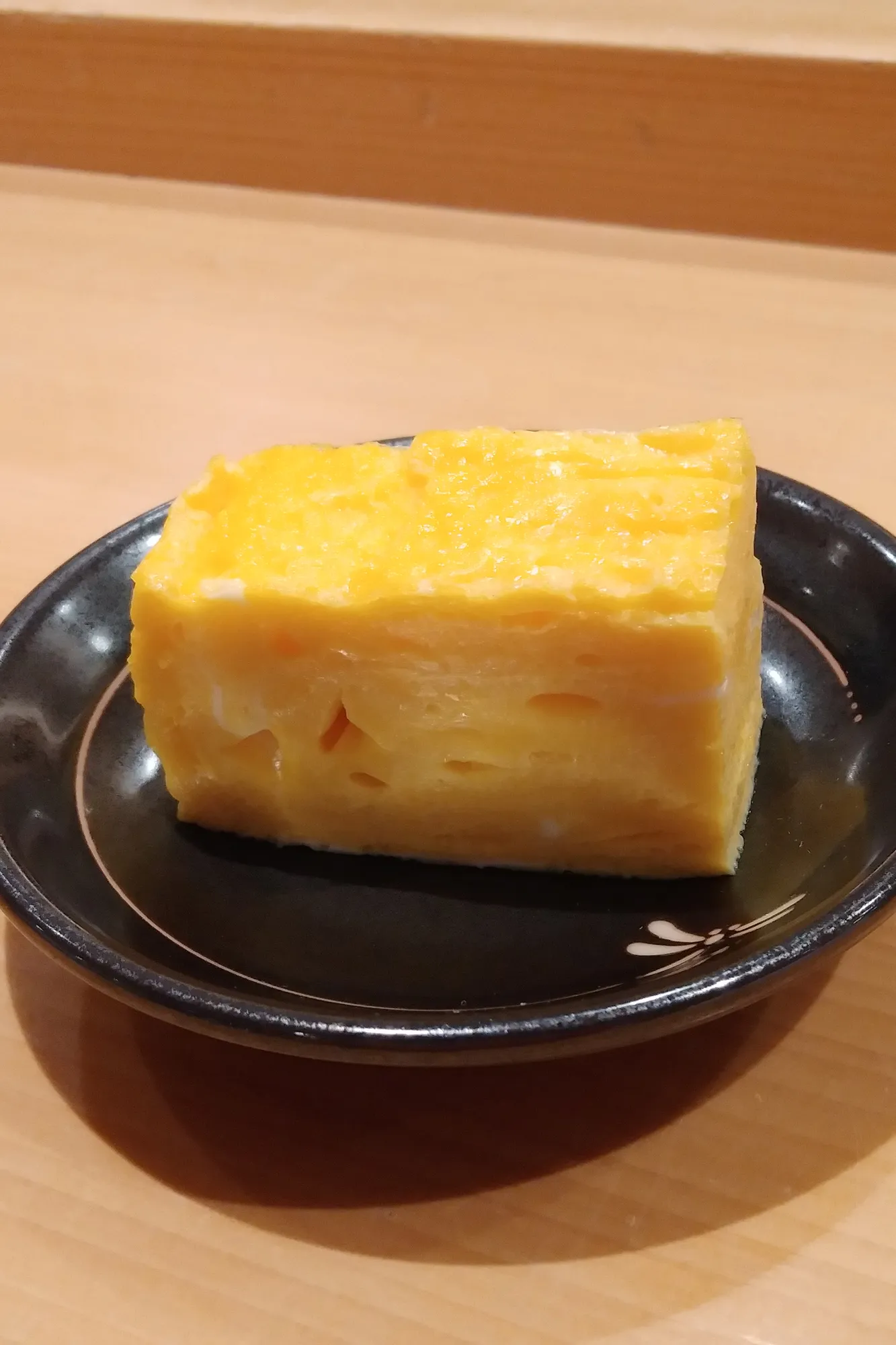

During the interval between sessions, the student showed a keen interest in not only sushi but also the Japanese dishes being prepared by the instructor and asked about their recipes. The instructor was greatly impressed by the student’s positive attitude and eagerness to learn anything observed during the lessons.
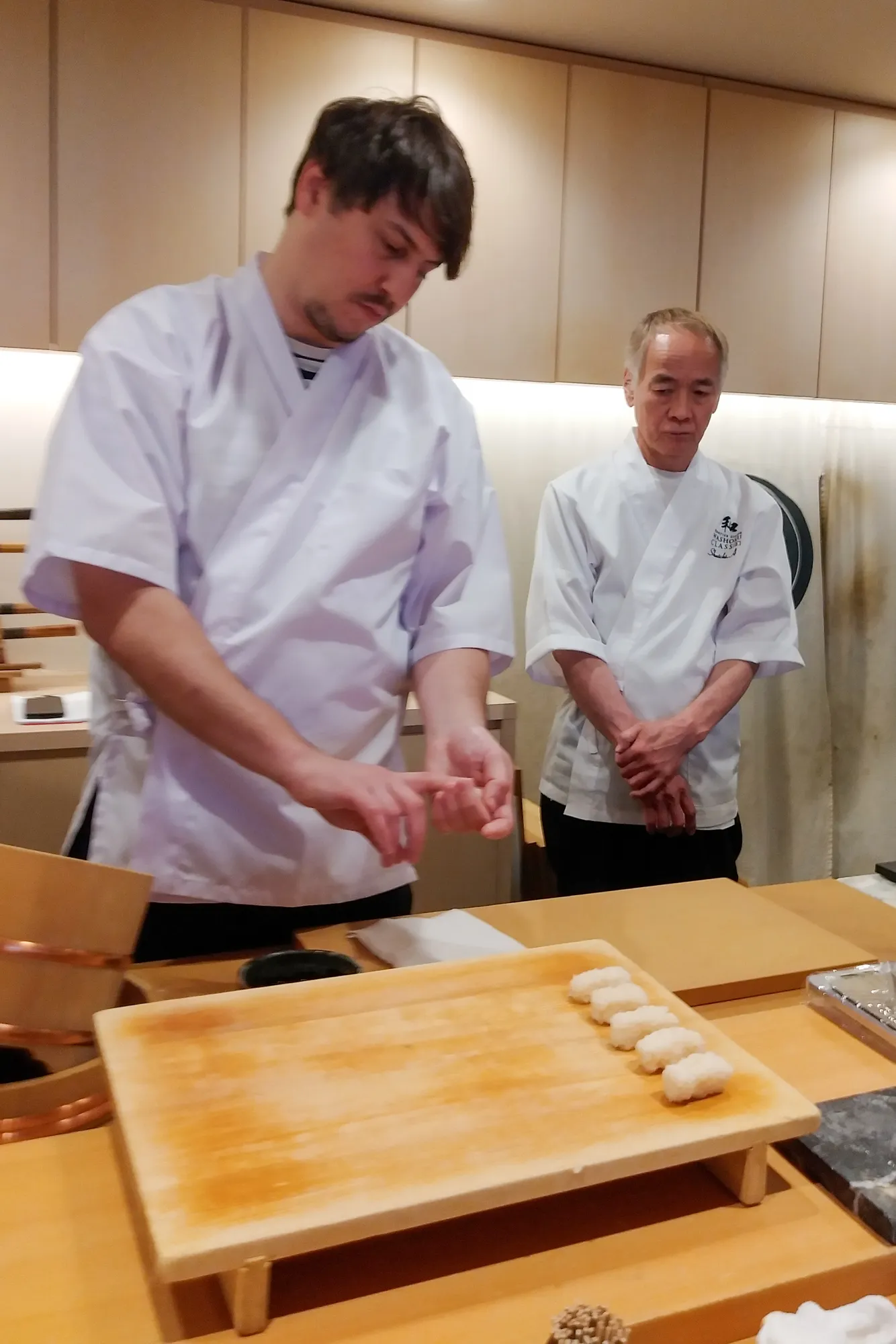
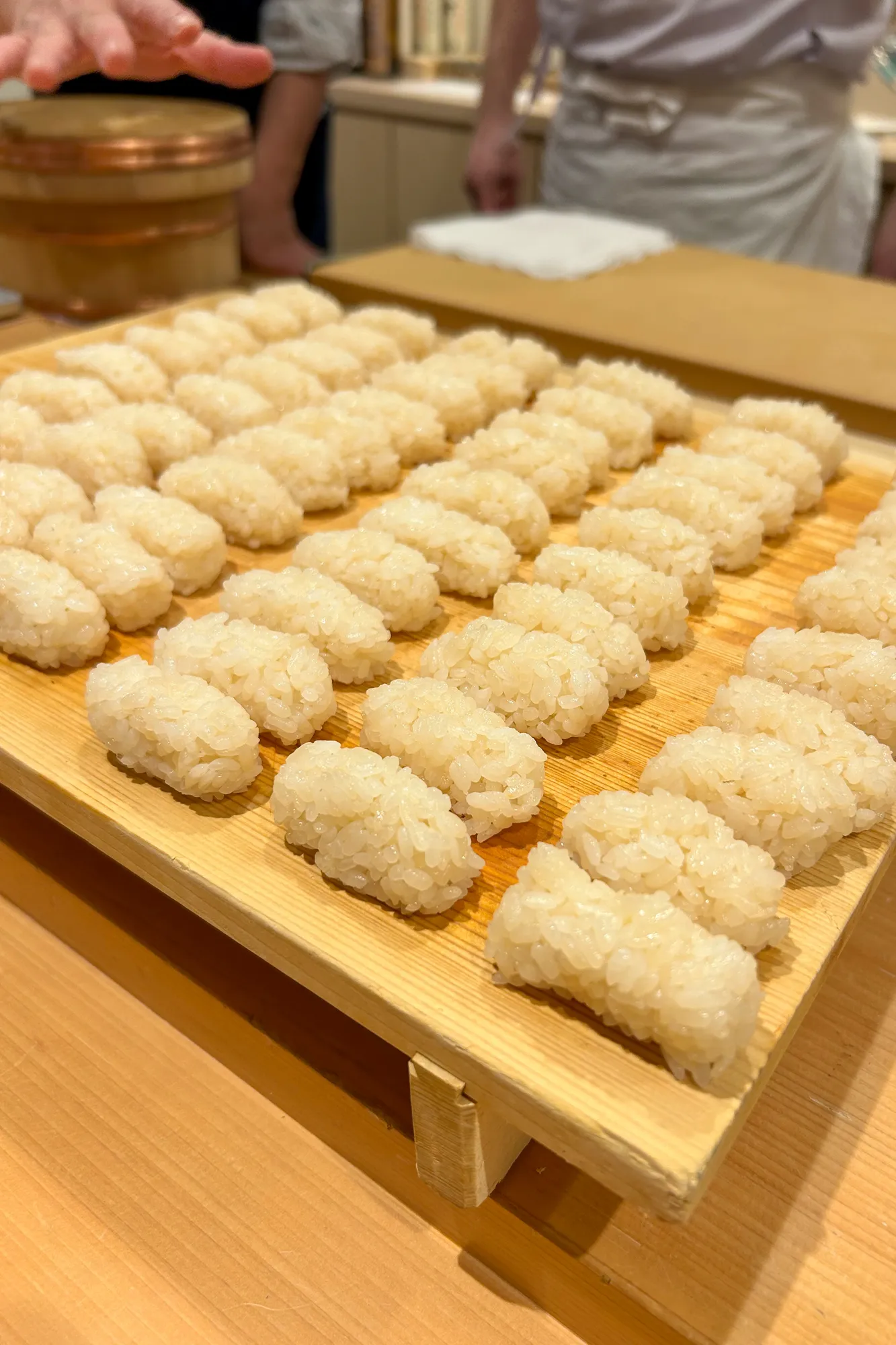
The third session was arguably the most crucial skill for crafting sushi: shaping sushi rice balls by hand. Without the ability to shape sushi rice balls properly, one cannot truly claim proficiency as a sushi chef. The instructor meticulously demonstrated the step-by-step process for shaping sushi rice balls several times, after which the student attempted it for the first time. While shaping a small piece of rice may seem straightforward, it involves a multitude of intricate techniques. Initially, the student was overly conscious of rice grains sticking to his hands, leading him to excessively wet them with vinegared water, which, in turn, made it difficult to shape the sushi rice balls. Furthermore, he meticulously reshaped the rice ball multiple times, overly concerned with achieving the perfect shape.
The instructor advised the student, ‘For now, focus on mastering the basics correctly through repetitive practice. Eventually, you’ll be able to shape sushi without hesitation. So, don’t worry too much about achieving the perfect shape right now.‘
The student’s daily task was to craft approximately 50 sushi rice balls. While this initially seemed tedious, the student became engrossed in the task. Within two weeks, he developed the ability to shape sushi rice balls smoothly, using less vinegared water on his hands, and ensuring uniformity in shape and size. ‘You’ve been improving day by day!’ praised the instructor, to which the student replied with a smile in Japanese, ‘Mada mada desu’ (meaning ‘There is still much to learn’). As days passed, he began to make jokes, signaling a positive rapport and progression in the lessons.
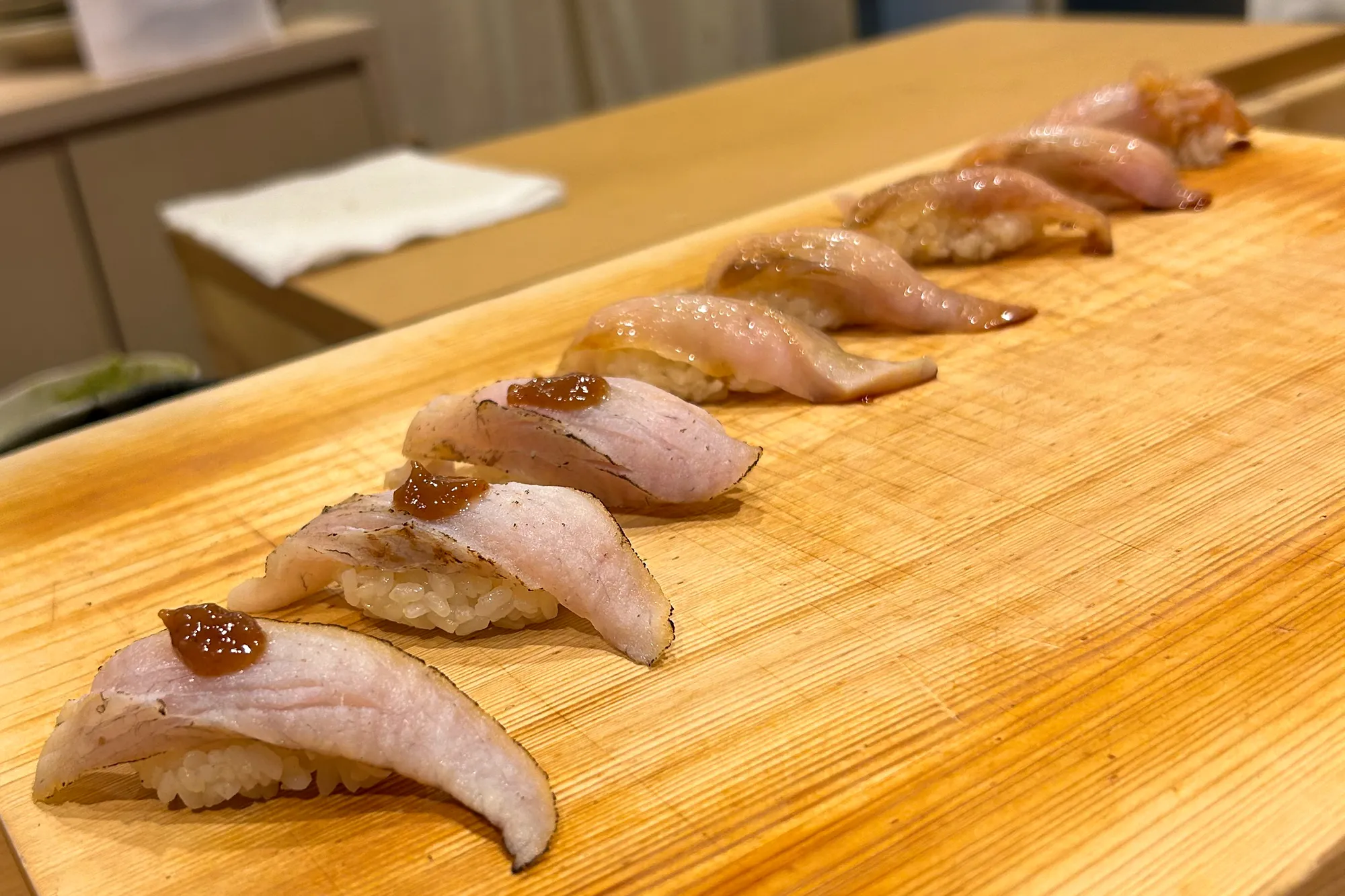

The final session of the day involved practicing ‘nigiri’—shaping sushi rice with fish on top. Initially, the student learned how to slice various types of fish for sushi, including ‘aji’ (horse mackerel), ‘iwashi’ (sardine), ‘tai’ (sea bream), ‘kanpachi’ (greater amberjack), ‘ebi’ (shrimp), and ‘houbou’ (gurnard). Once again, the instructor patiently and meticulously taught the student how to handle the Japanese kitchen knife to ensure uniform size, thickness, and shape when slicing the fish. Subsequently, the student practiced making nigiri using the fish he had sliced. During the first week, he approached crafting nigiri cautiously, ensuring he followed the correct steps. However, by the second week, he became more adept at the process, showing noticeable improvement, particularly in the size and shape of the nigiri. With continued practice over the next two weeks, he is poised to increase his speed and efficiency in making nigiri.

This is an overall summary of the first two weeks of our 4-Week Private Sushi Course, which primarily consisted of four main sessions:
- Cooking rice and preparing vinegared rice for sushi.
- Filleting.
- Shaping sushi rice balls.
- Making nigiri.
The student will continue to engage in the above sessions over the following two weeks to further develop foundational sushi skills during their stay in Japan. Additionally, they will begin learning sushi rolls, ‘sashimi’ (slices of raw fish), ‘tempura’, and other dishes with the aim of mastering the ‘omakase’ style by the end of the Sushi Course. His sushi journey continues.
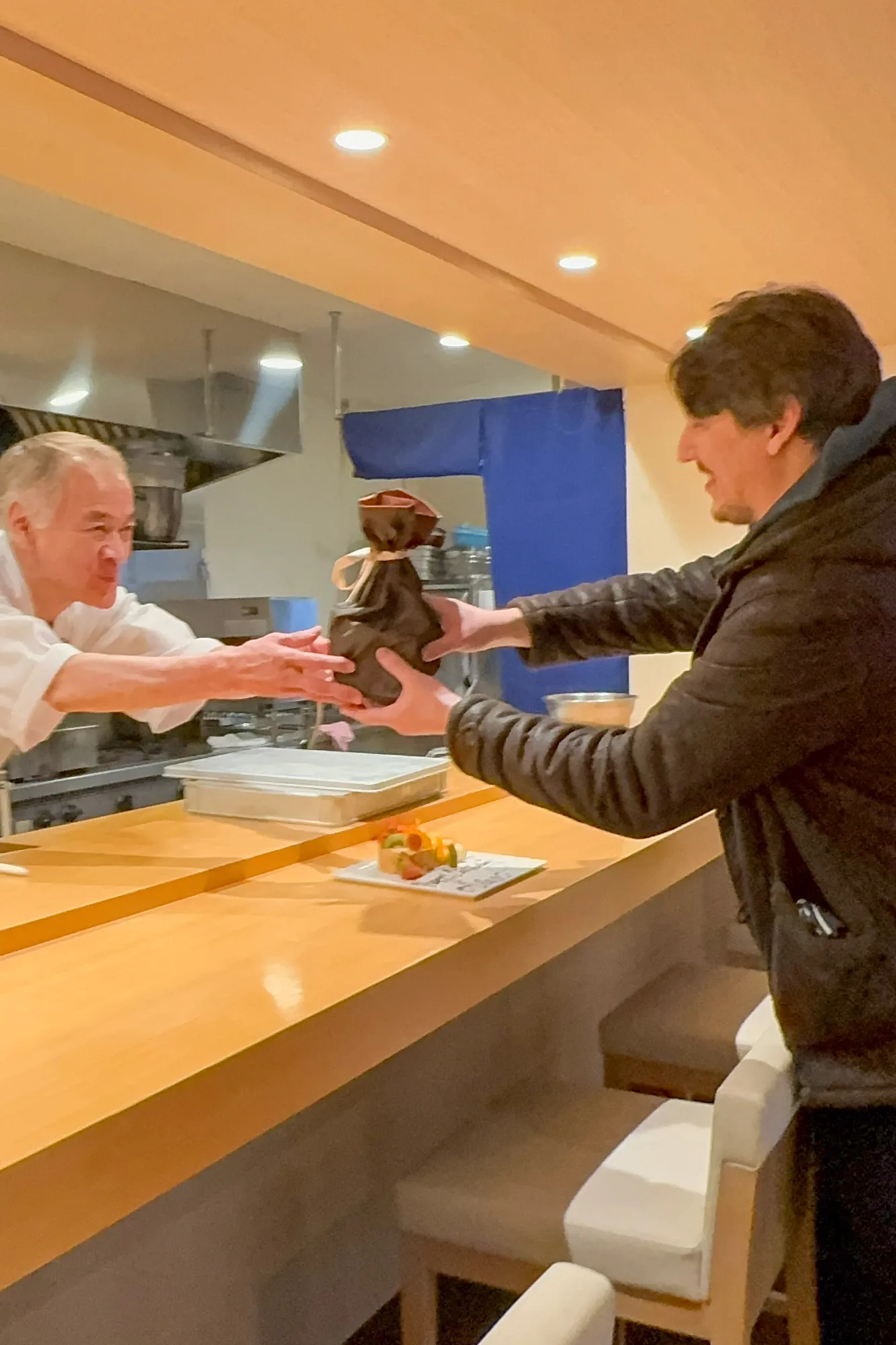
PS
After the lesson on the ninth day, we celebrated the student’s birthday, which had occurred about two weeks earlier, with an assortment of sweets and fruits from our chef instructor, Obata, a birthday card, and a small ‘kiriko’ cut glass. All the staff members of FZWC wish him good luck and great success in the year ahead!
